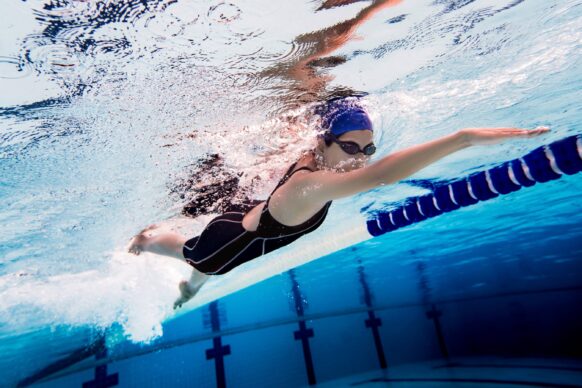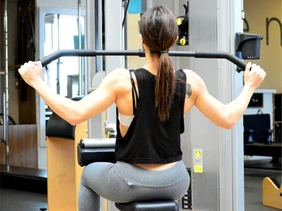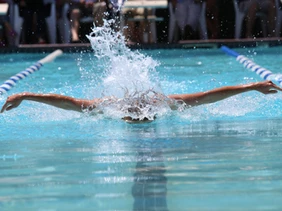By Thomas Martinho, PT, DPT
Shoulder injuries are prevalent in the swimming community. One of the biggest issues people face when returning to swimming following an injury is pain or discomfort during the catch-phase or the top of the freestyle stroke. A swimmer may feel strong and have little to no shoulder pain with traditional strength training, however continue to be irritated with the repetitive overhead motion of swimming. This irritation can be due to difficulty achieving the terminal overhead mobility utilized in swimming. Incorporating self-myofascial release techniques to achieve the range of motion required for freestyle can help get a swimmer over that hump and back to pain-free swimming.
Myofascial release helps alleviate muscle tightness and improve tissue flexibility that may be affecting a swimmer’s range of motion. Freestyle swimming requires scapular upward rotation, retraction and elevation, along with shoulder flexion/abduction and internal rotation.
Tightness in the pectoralis, rhomboids and levator scapulae can resist scapular motion, while posterior cuff and lat tightness affect the required shoulder mobility. Try these techniques with a tennis or lacrosse ball to address these commonly affected areas. Perform each for 1-2 minutes.
Rhomboid/Levator Scapulae Release
(1-2 min)
While leaning against a wall, place a lacrosse ball between your shoulder blade and spine. You can roll your body up and down the wall to locate areas of tightness. Once you have found a tight spot, incorporating movement like a W or an angel can help further release the area.
Pectoralis Release
(1-2 min)
Using a doorway, place a ball between the wall and the front of your shoulder. The ball should be situated medial to your shoulder and just below the collarbone. The ball should not be in contact with bone but in the softer muscular area. Moving the arm up and back can intensify the stretch.
Posterior Shoulder Release 1
(1-2 min)
While laying on your side, place a ball at the back of your shoulder. Bring arm in and out of internal rotation to massage through the posterior cuff.
Posterior Shoulder Release 2
(1-2 min)
Pin a ball between your posterior shoulder/lat area and a wall. You can move your body to find a tight area. From there bring your arm into flexion and or abduction to address the muscular restrictions.




